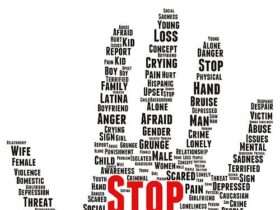California is a beautiful state in the United States. In California, child custody can feel confusing, stressful, and emotional for any parent. When parents separate or divorce, they often worry about how much time they will get with their children.
They also want to know what rights they have and how the court makes decisions. These concerns often include questions about fathers’ rights in California, because many parents want to know if the law treats mothers and fathers the same.
The truth is that California has clear rules, and both parents have important rights. Understanding these rights can help you make better choices and focus on what matters most—your child.
What “Parental Rights” Means
Parental rights are the legal rights and responsibilities a parent has toward their child. This includes things like
- Spending time with the child
- Making decisions about school, health, and activities
- Keeping the child safe
- Providing emotional and financial support
California courts believe that children do best when they have a strong, healthy relationship with both parents, unless there is a safety problem. This means the law does not favor one parent over the other based on gender.
How Custody Works in California
California uses two main types of custody:
1. Legal Custody
This is the right to make important decisions for the child. Parents decide things like:
- What school the child attends
- What medical care they get
- What activities or sports they join
Legal custody can be:
- Joint legal custody: Both parents share decision-making
- Sole legal custody: One parent makes the major decisions.
2. Physical Custody
This refers to where the child lives. It can also be:
- Joint physical custody: The child spends significant time with both parents.
- Sole physical custody: The child lives mostly with one parent.
Parents can still share legal custody even if one parent has most of the physical custody.
How Courts Decide Custody
California courts focus on one main rule: the best interests of the child. This means they look at many things to decide what is healthiest, safest, and most stable for the child.
Some things the court considers include
- The child’s age
- The child’s health and needs
- The emotional bond with each parent
- Each parent’s ability to care for the child
- Any history of abuse, violence, or unsafe behavior
- The child’s school and home stability
- How well the parents communicate
The court does not decide custody based on who is the mother and who is the father. Both parents start on equal ground.
Rights That Both Parents Have
In most cases, both parents have the right to:
- Spend meaningful time with their child
- Be involved in their child’s education and medical care
- Receive updates about school, health, and activities
- Ask the court for a custody order or a change to an old order
- Speak in court and share evidence
Both parents also must follow court orders and put the child’s needs first.
What About Fathers?
Fathers often worry that they will get less time or fewer rights. But California law says mothers and fathers have the same rights.
Fathers may need to prove paternity if they were not married to the mother. This is usually done through a simple legal form or a DNA test. Once paternity is confirmed, the father has the same rights as any other parent.
Key Takeaways
- California puts the child’s best interests first in every custody case.
- Mothers and fathers start with equal rights under California law.
- Legal custody covers decisions; physical custody covers where the child lives.
- Courts look at safety, stability, and the child’s emotional needs.
- Understanding parental rights helps parents work toward a fair and healthy plan for their child.







